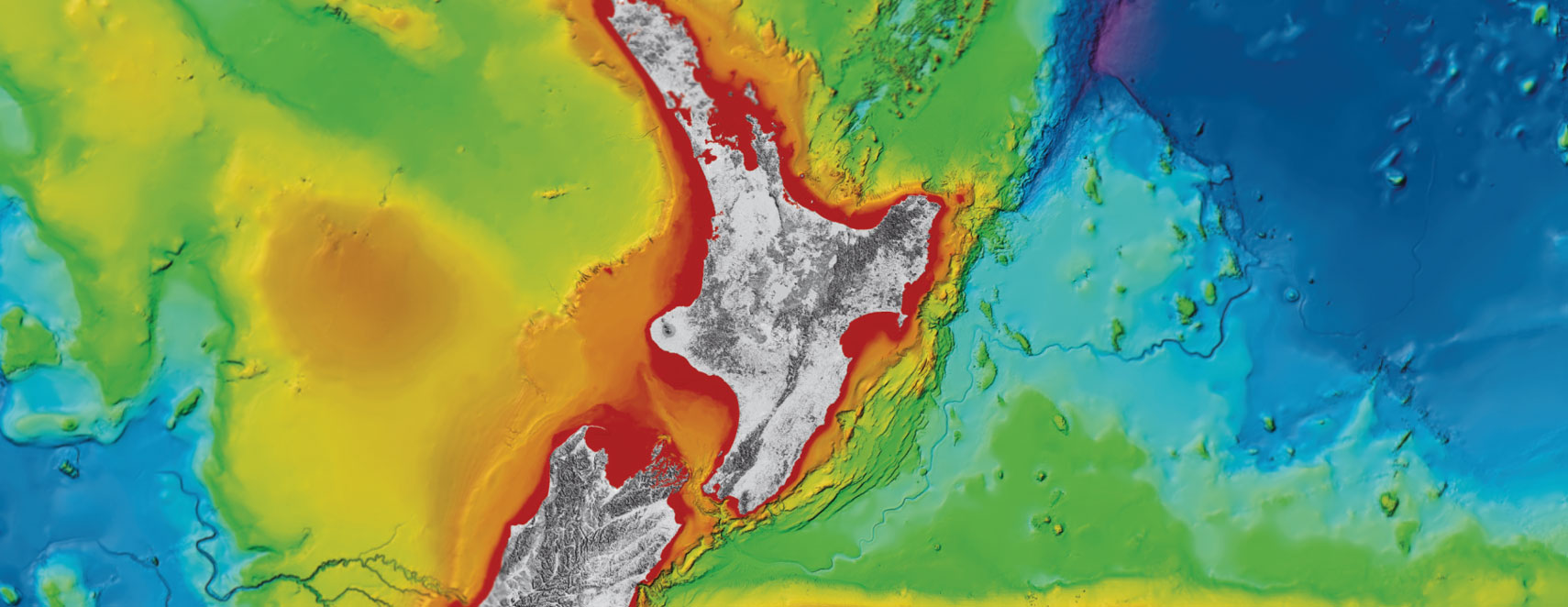
International research to gather more information about NZ’s largest fault

An international team of scientists sets off this weekend to place earthquake monitoring instruments along New Zealand’s largest fault, the Hikurangi subduction zone.
About 40 instruments will record seismic movement and information that will help us better understand the earthquake and tsunami potential for the zone, which runs along the North Island’s East Coast.
“What we can learn about this fault and how it moves will help us understand and prepare for the next great earthquake,” GNS Science expedition leader Dr Daniel Barker says.
Subduction zones are where most of the world’s deadliest earthquakes, volcanoes and tsunamis occur, such as the Sumatra (2004) and northern Japan (2011) Magnitude 9 earthquakes and tsunami.
GNS Science is leading the operation aboard NIWA’s research ship R/V Tangaroa, and the instruments will be placed off the coast of Gisborne, Hawke’s Bay, and Wairarapa.
“This plate boundary has the potential to produce powerful earthquakes and tsunamis, so this research is a priority for New Zealand geoscientists,” project leader Dr Laura Wallace says.
One of the instrument types being used are seafloor pressure sensors, that will record the upward or downward movement of the seabed. These can detect “slow motion earthquakes” offshore, and may also provide evidence about how the zone might behave in a large earthquake.
The team will also deploy two arrays of precision seafloor transponders to track horizontal movement of the seafloor, and several ocean bottom seismometers.
“We expect that the instruments will record many hundreds of small earthquakes that cannot be accurately located with land-based instruments,” Dr Wallace says.
The expedition includes scientists from GNS Science, Victoria University of Wellington, Lamont Doherty Earth Observatory (US), Scripps Institution of Oceanography (US), as well as Tohoku, Kyoto and Tokyo Universities in Japan.
“Because so many interesting things are occurring on the Hikurangi subduction zone, New Zealand provides an ideal natural laboratory to deploy these instruments”, said Professor Spahr Webb of Columbia University.
Trip of a lifetime for Wellington PhD students
Training young scientists on the latest earthquake research is essential for New Zealand to build its long-term capacity and capability to understand and monitor the subduction zone for earthquakes and tsunamis.
For two PhD students, this is a trip of lifetime to do fieldwork at sea.
Weiwei Wang and Katie Woods (Victoria University of Wellington) will be helping to lower 19 seafloor pressure sensors and eight Ocean Bottom Seismometers (OBSs).
“This is the first voyage for us both, we’re a bit nervous about sea sickness, but really thrilled to work with world experts,” Katie Woods says.
The region off the Gisborne coast is an excellent ‘laboratory’ in which to learn new information about the way the Earth works.
This deployment is part of a multi-year package of scientific investigations off the North Island’s east coast that will help significantly in advancing earthquake science.
“It’s such an amazing opportunity to learn both how the recorders work and how they’re installed,” Katie Woods says
“We’ll both be analysing the data they collect for the next few years of our doctoral research.”
Weiwei Wang and Katie Woods will be writing blog updates during the voyage and these will be published here.
Disclaimers and Copyright
While every endeavour has been taken by the East Coast Lab Hikurangi Subduction Zone M9 to ensure that the information on this website is
accurate and up to date, East Coast Lab Hikurangi Subduction Zone M9 shall not be liable for any loss suffered through the use, directly or indirectly, of information on this website. Information contained has been assembled in good faith.
Some of the information available in this site is from the New Zealand Public domain and supplied by relevant
government agencies. East Coast Lab Hikurangi Subduction Zone M9 cannot accept any liability for its accuracy or content.
Portions of the information and material on this site, including data, pages, documents, online
graphics and images are protected by copyright, unless specifically notified to the contrary. Externally sourced
information or material is copyright to the respective provider.
© East Coast Lab Hikurangi Subduction Zone M9 - www.eastcoastlab.org.nz / +64 6 835 9200 / info@eastcoastlab.org.nz
